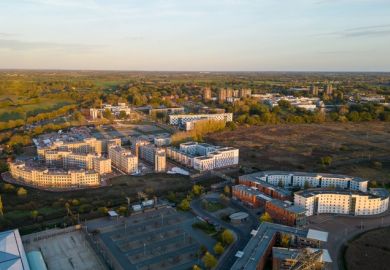Newly released documents illustrate the rich pickings enjoyed by Australian university A-listers, with dozens of staff out-earning the prime minister and hundreds attracting salaries way over those prescribed in industrial agreements.
The 50 best-paid employees at each of the universities of Sydney and Queensland and UNSW Sydney all receive well over A$350,000 (£201,000) a year even before add-ons such as superannuation and termination payments are included.
And while senior remuneration is more modest at the universities of Adelaide and Western Australia and the Australian National University (ANU), the top earners still pocket more than a quarter of a million dollars apiece.
The figures were passed to Times Higher Education by a Melbourne-based academic, who asked Group of Eight institutions to outline the 50 highest salaries they had reported to the Australian Taxation Office (ATO) in 2018-19 and 2019-20 – without identifying the recipients – in requests issued under freedom of information (FoI) legislation.
Monash and Melbourne universities denied the requests, saying privacy considerations precluded the disclosure of “personal” details. Adelaide refused the application on commercial-in-confidence grounds, only to be overruled by the South Australian Ombudsman.
While Australian universities have tens of thousands of often poorly paid casual workers, the newly released figures reveal the scale of the academic overclass at the top of the pyramid.
University annual reports disclose the remuneration bands of a dozen or so executives at each institution, but not other senior managers or star academics, and the inclusion of add-ons such as severance packages and accommodation allowances makes it difficult to determine their take-home pay.
The newly released documents suggest that this opacity extends down the ladder, with many salaries negotiated behind closed doors. The 50th best-paid employees at Sydney, UNSW and Queensland earned over 80 per cent more than the maximum figures in their respective enterprise agreements, and more than triple the average university lecturer’s income reported by the ATO.
Queensland said its benchmarking confirmed that its executive remuneration was “competitive and appropriate for an organisation of this size”. Sydney said its senior staff salaries reflected “independent remuneration benchmarking against sector norms”.
Sydney sociologist Salvatore Babones said salaries of this scale seemed reasonable for senior medical professionals working in higher education, but not for general staff. “[University] administrators often attempt to benchmark salaries to other sectors, without adjusting for the fact that academic jobs are effectively public sector-style jobs,” he said.
“Senior administrator salaries [should] be benchmarked to the public service, because they are in all but name public servants.”
Adelaide and ANU said they paid what was necessary to attract top staff in a global contest for talent. Publicly available data suggest that generous salaries would be needed to lure staff away from the University of California system, where the 50th best-paid employee at each campus earns a basic salary ranging from $190,000 (£172,000) at the University of California, Merced to $437,000 at the University of California, Los Angeles.
But there are vastly more big-earning university staff in Australia than the UK, where just five universities had more than 50 employees earning more than £150,000 each in 2019-20, according to data compiled by the TaxPayers’ Alliance. The average UK university had just nine staff with incomes above this threshold, compared with at least 45 at the six Australian institutions that disclosed their pay data.
Despite its relative thriftiness, the UK sector is also more transparent. British agencies issue detailed reports on the remuneration of senior higher education staff, including the number at each institution who earn more than £100,000 a year.
Australia’s National Tertiary Education Union said executive salaries had “gone through the roof” while institutions increasingly relied on insecure workforces. “If universities can afford to pay vice-chancellors and senior management these eye-watering sums, then they can certainly afford fair pay rises and more secure jobs,” said national president Alison Barnes.
Register to continue
Why register?
- Registration is free and only takes a moment
- Once registered, you can read 3 articles a month
- Sign up for our newsletter
Subscribe
Or subscribe for unlimited access to:
- Unlimited access to news, views, insights & reviews
- Digital editions
- Digital access to THE’s university and college rankings analysis
Already registered or a current subscriber?












